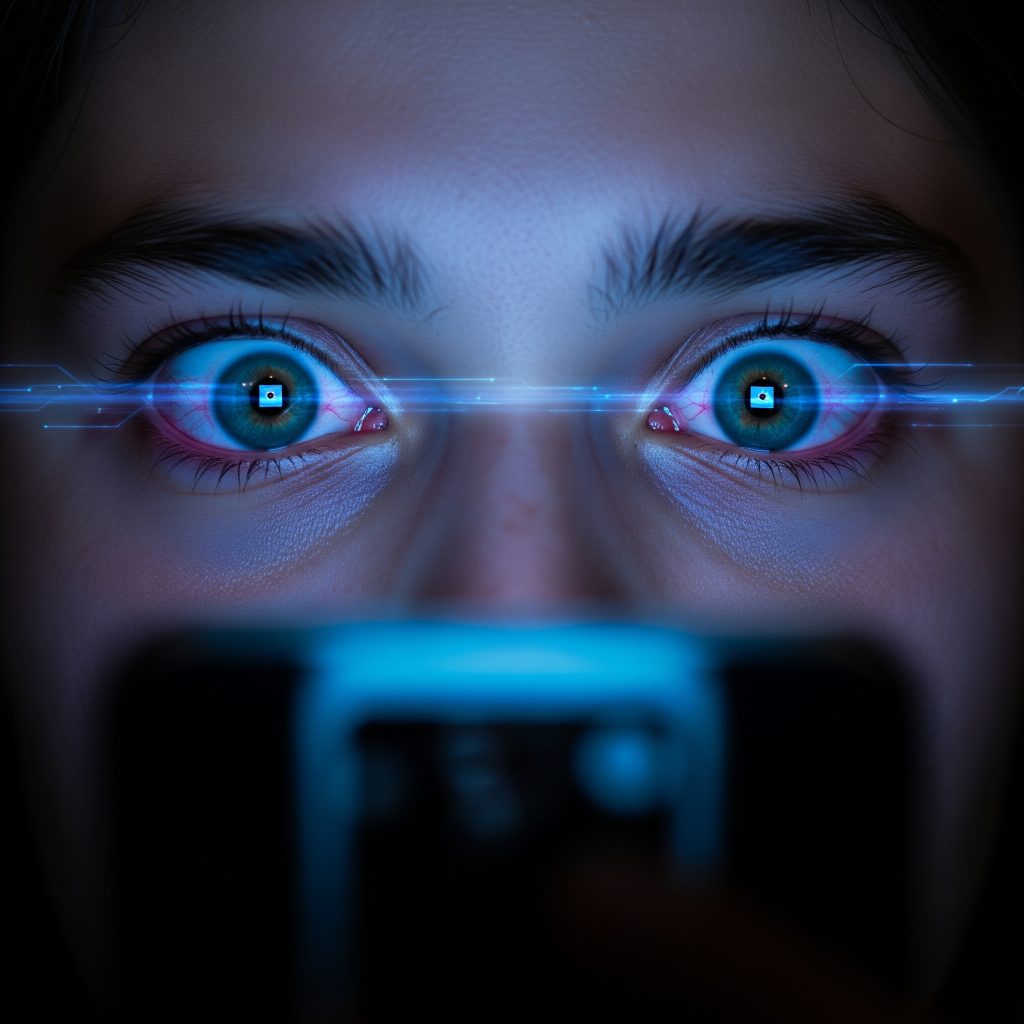
Exposure to blue‑white (HEV) light from screens—like smartphones, tablets, and laptops—has been strongly associated with symptoms of digital eye strain, also known as computer vision syndrome. Common complaints include dry or irritated eyes, blurred vision, headaches, and even neck pain from extended screen use. These issues are often driven not by the blue light itself, but by reduced blinking and constant near-focus that strain the eye muscles over time locations.visionworks.com+6drgreenoptical.com+6American Academy of Ophthalmology+6Wikipedia+2amaEyes+2.
At high energy wavelengths (around 415–450 nm), blue light can penetrate through the cornea and lens to reach the retina, potentially creating oxidative stress and inflammation in ocular surface cells. Over time, this may play a role—especially when compounded by other risk factors—in the development of dry eye or retinal stress PMC.
Blue light exposure also influences your internal clock by suppressing melatonin, the hormone that governs sleep‑wake cycles. Even low levels of evening blue light—for example from your screen or ambient LEDs—can delay melatonin release, disrupt sleep onset, and reduce sleep quality. This effect is notably more pronounced than other visible light types Harvard HealthWikipediaamaEyes.
Despite popular belief, the bulk of scientific evidence to date suggests that the amount of blue light emitted from digital devices is not sufficient to cause permanent retinal damage or significantly increase risk of conditions like macular degeneration. Studies consistently show screen devices emit far less blue light than the natural sunlight levels required to induce photochemical harm mdpi.com+2amaEyes+2.
Rather than relying on blue‑light‑filtering glasses—which research does not support as an effective standalone preventative—optometrists recommend behavioral and environmental strategies. These include using built‑in night‑mode or display filters, following the 20‑20‑20 rule (take a 20‑second break every 20 minutes to view something 20 feet away), increasing ambient lighting, and encouraging regular blinking to maintain tear film health Wikipedia+4eyecarefirst.net+4health.com+4.
At Findlay Creek Eye Clinic, we offer comprehensive eye examinations to assess and address symptoms of digital eye strain or irritation. Our evaluations can help identify underlying issues—such as dry eye syndrome or early visual fatigue—and guide personalized solutions, including screen ergonomics, vision correction, and healthy sleep hygiene habits to protect your eyesight in today’s screen‑dominant world.